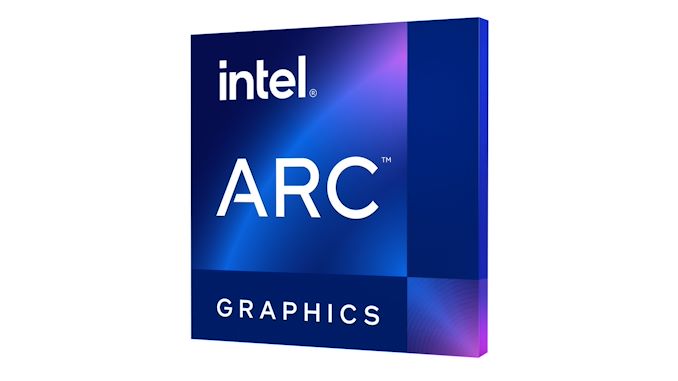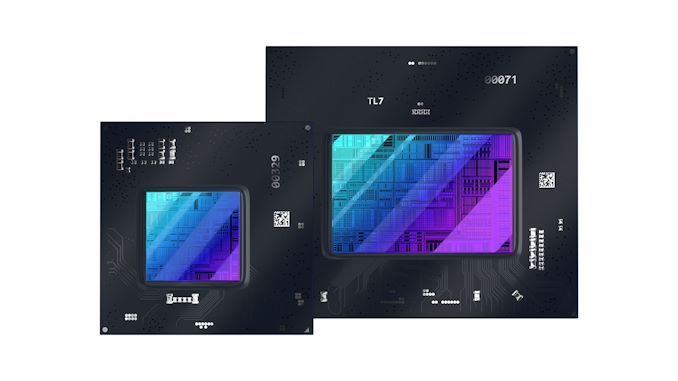Intel: Desktop Arc A-Series Launch Now Staggers in to Q3'22
by Ryan Smith on May 10, 2022 9:45 AM EST
Ahead of Intel’s Vision event this morning, the company has published a short update on the status of the ongoing launch of their Arc family of GPUs. Penned by VP and GM of Intel’s Visual Compute Group, Lisa Pearce, the blog post addresses a few questions around the Arc launch, and particularly when we should expect to see the launch of Intel’s first desktop cards.
Starting there first, Pearce has announced that the desktop Arc launch has for all practical purposes slipped, with Intel now outlining a more staggered approach to their desktop launch. The first Arc desktop products were previously slated to launch later in Q2, and while this technically remains true, Intel’s Q2 launch plans are now limited to the Chinese market. The worldwide launch of the first desktop Arc products will then follow that in Q3 of this year.
Furthermore, that initial launch is going to be limited to the low end (3-series) parts of the Arc product stack, all of which are based around the ACM-G11 GPU. This is the same GPU that’s being used in Intel’s first wave of mobile Arc products as well, so like in mobile, Intel is starting small and working their way up on the desktop. The desktop launch of the rest of Intel’s stack, the mid-range Arc 5 and high-end Arc Arc 7 products, will then follow in late summer. This will be a worldwide launch, however Pearce is very careful to note that it’s initially for “OEMs and system integrators”, with a retail release to follow later.
Given Intel’s slow, regional-focused rollout of their first Arc mobile products, these developments are not entirely unexpected. As Pearce accurately notes in her blog post, Intel tends to launch low-end (and low-volume) parts in China first, which is something we saw last year with the release of Intel’s Iris Xe (DG1) products. Compared in particular to the North American and European markets, the Chinese market is far more weighted towards entry-level parts, and logistically it makes for an easier launch since this is where many boards and board components are made to begin with.
| Intel Arc Launch Decoder | ||||||
| Arc 3 Mobile | Arc 5 & 7 Mobile | Arc 3 Desktop | Arc 5 & 7 Desktop | |||
| China: OEM | Launched | Early Summer | Q2 | Later This Summer | ||
| China; Retail | - | - | After OEMs | After OEMs | ||
| Rest of World: OEM | Shipping Now | Early Summer | Q3 | Later This Summer | ||
| Rest of World: Retail | - | - | After OEMs | After OEMs | ||
Meanwhile, Pearce’s blog post also offers an update on the ongoing rollout of Intel’s Arc mobile products. Acknowledging that Arc 3 laptop shipments are behind schedule, according to Pearce Intel has been hamstrung by a combination of unspecified software issues and China’s significant COVID lockdowns. As a result, Arc 3 laptops are only now finally becoming available on a worldwide level.
With the kinks apparently worked out, Intel is now preparing for the launch of the first mobile Arc 5 and Arc 7 products. Like Arc 3, the mobile parts will debut first. According to Pearce, the first Arc 5 and Arc 7 laptops will be available early this summer, hinting at a post-Computex (and likely Q3) release.
Overall, Intel has been planning a relatively modest launch from the start, with just a bit over 4 million GPUs slated for 2022. So the silver lining to their multiple schedule delays, at least, is that the company is getting some of the kinks worked out of the process while they’re still dealing with what’s ultimately small potatoes. With future generations the stakes will go up – and so will the expectations.
Source: Intel











32 Comments
View All Comments
ragenalien - Tuesday, May 10, 2022 - link
Intel might know something we don't. AMD just launched a refresh (today) so I doubt RDNA3 shows up before Q4 or more likely early 2023. Nvidia might launch their high end 4070 and up cards later this summer but the intel cards were never meant to compete with those. Hopefully they price accordingly.ZipSpeed - Tuesday, May 10, 2022 - link
Correct. Alchemist was meant to compete with RDNA2 and Ampere, and Battlemage is supposed to to go toe-to-toe with RDNA3 and Ada. I wouldn't read too much into AMD's refresh launches and launches of their next-gen. As an example, Zen 2 refresh launched four months before Zen 3. I think we'll see Navi 33 (monolithic) this year. Navi 31 & 32 (MCM) is the question mark.Drumsticks - Tuesday, May 10, 2022 - link
It took nearly two years for the 3000 series and the RDNA2 series to actually descend to MSRP and have good supply. While the issues they had then might not entirely affect us now, I imagine there is space for Intel to get the sales they want. I doubt 4000 series/RDNA3 are going to be easily available so quickly.wrkingclass_hero - Tuesday, May 10, 2022 - link
Those GPUs are a glimmer of excrement.Mr Perfect - Tuesday, May 10, 2022 - link
Hopefully Battlemage doesn't get pushed back. If Alchemist ends up just being a stop gap product between now and 2023, then Battlemage has a chance at showing up along with it's peers from AMD and Nvidia.Intel has shown a willingness to cut the lifecycle of an undesirable product short before, most recently with Alder Lake putting Rocket Lake in the rearview mirror after seven short months.
meacupla - Tuesday, May 10, 2022 - link
Alchemist and Battlemage are both stop gap products, until the 3rd generation shows up.3rd Gen is where Intel wants to release a halo product with mature drivers that will compete with the 4090ti and 7950XT or whatever halo product AMD and nvidia have at the time.
Intel even admits that Alchemist and Battlemage are stop gaps, as they expect mature drivers to up GPU performance by some 10~20% down the line, and they specifically said they wanted to go for the crown by 2025.
whatthe123 - Tuesday, May 10, 2022 - link
they really need to just stop with the botched releases. yes it will hurt their pockets short term but I can't imagine they're being all that productive with all the effort going into half baked launches, especially the software supporting it. intel 7 might've been late but TSMC is on schedule for now so just eat the loss and move on to newer designs on mature nodes.cyrusfox - Wednesday, May 11, 2022 - link
In childhood development, children don't skip the walking stage and go straight from crawling to running. Likewise in semiconductor fabrication, it is sequential/iterative innovation and development. You can't skip a node and be successful at something more difficult without going through the trials and refinement of the current generation. Its easy to say just jump ahead, impossible to perform as they are in fact iterative developments. Intel reinforced their desire to make top tier chips with their IDM 2.0 announcements and new fab expansion plan, putting to rest the rumors of Intel relying solely on TSMC. Intel better figure it out inhouse or TSMC will continue to raise prices on a captive market.whatthe123 - Wednesday, May 11, 2022 - link
this isn't child development, designs are set years in advance and intel's problem has been largely in software. the GPUs have been fine when the software is fine, particularly GPGPU like transcoding. what isn't fine are the staggered botched launches and poor gaming compatibility, which absolutely does require a lot of software work on a per design basis for proper support. GPUs aren't CPUs that can run entirely in software with cross compatibility over generations.yeeeeman - Tuesday, May 10, 2022 - link
Let's say I understand the supply chain issues, but if they really have great products on their hands they should send them to reviewers.